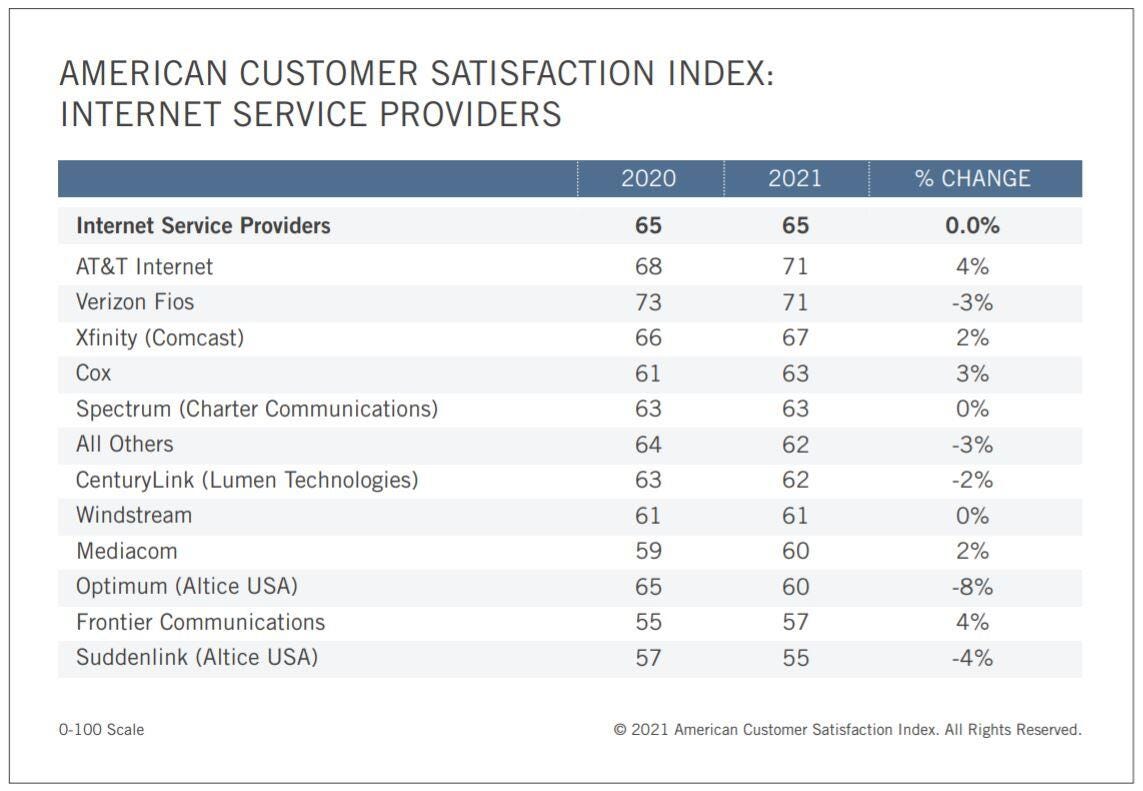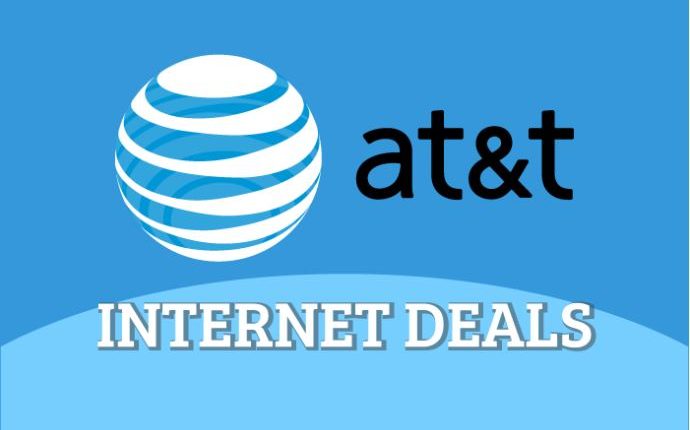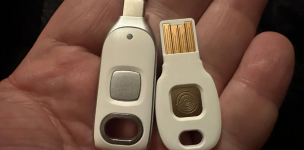The provider’s broadband service is available to over 40% of US homes, but only a third have access to its faster plans.
Back in May 2021, AT&T CEO John Stankey declared the company would put greater focus on expanding its fiber footprint. In fact, he went further and said AT&T would home in on “the single goal of offering the best fixed-broadband service in the market.”
In 2022, AT&T has leaned into that goal by announcing new multi-gig plans in more than 70 cities. The new speeds are available to just over 5 million customers right now, with that number expected to grow throughout 2022.
So, where does that put AT&T now? If you’re living in one of the 21 states where AT&T provides internet service and eligible for one of the company’s fiber plans, then you’re in a perfect spot. AT&T’s fiber internet offers a great connection at a terrific value. However, most customers within AT&T’s service area aren’t living in homes wired for fiber. Instead, AT&T connects those customers using fixed wireless or a DSL hybrid service. That means less value and much slower speeds than what you’ll get with fiber.
LIKE
- No contracts required to receive the lowest available price
- No data caps for any fiber plans
- Valuable perks and promotional offers
DON’T LIKE
- Much slower DSL plans are more prevalent than fiber options
- No way to avoid additional monthly router fees if you’re not a fiber customer
- Data caps enforced on all non-fiber plans
In other words, recommending AT&T Internet comes down to where you live and what’s available at your address. If AT&T Fiber is an option, then move it right to the top of your list. But if you’re not serviceable for fiber, shop around to see if you can do better than AT&T’s fixed wireless or DSL solutions.
AT&T Internet plans and prices
AT&T offers several fiber internet plans, none of which come with contracts or data caps. The company tells CNET that three of those fiber plans — Internet 300, Internet 500 and Internet 1000 — are available to just under a third of customers in the company’s footprint. The multi-gig plans are available to a smaller portion of that base, currently just over five million.
The rest of the plans use a DSL/fiber hybrid approach to service the rest of AT&T’s customer base, though the addition of DSL infrastructure means that speeds are a lot slower.
Here’s your full list of options:
AT&T home internet plans


AT&T offers at least three of the above plans for most of its serviceable areas. In a few geographic locations, mainly rural or suburban areas, you may only have access to AT&T Internet Basic (not shown in the table above), which features either a 5-megabits-per-second plan or one offering 1.5 or 0.8Mbps. Basic is the right word for it and perhaps that’s too generous.
Here are the internet connection types AT&T offers
There are a couple of potential outcomes when you seek to sign up for AT&T Internet. If you see any of the 300, 500 or gig speed tiers offered at your address, you have access to AT&T’s fiber internet service, which uses 100% fiber technology. Fiber connections are symmetrical by design, which means that your upload speeds will be just as fast as your downloads, unlike DSL, cable and other modes of internet. That’s particularly useful for videoconferencing, transferring files (for those of us working and schooling from home) and online gaming.
Outside of the fiber plans, most of AT&T’s plans are DSL, a hybrid of fiber-optic and copper cable. This means speeds are much slower than a pure fiber connection, and you won’t see upload speeds as high as your download speeds.
In addition to AT&T’s fiber and DSL plans, the company offers a fixed-wireless option, which involves installing an antenna and wireless equipment within the home. Speeds won’t get much higher than 25Mbps with a connection like that — it’s intended mostly for homes that lack other options for getting online.
According to the most recent report from the Federal Communications Commission, AT&T Internet plans are 30% fiber, 7% fixed wireless and the rest are DSL. That said, the FCC’s numbers are out of date (and the data comes with plenty of other flaws, too).
An AT&T spokesperson wouldn’t disclose the most current breakdown of its service plans when we asked, but the company says its fiber footprint is larger than the FCC’s data suggests. As we mentioned at the top of the page, AT&T’s CEO has doubled down on the company’s commitment to fiber expansion.

AT&T Internet availability
AT&T’s internet service area covers 21 states across the country. The list includes Alabama, Arkansas, California, Florida, Georgia, Illinois, Indiana, Kansas, Kentucky, Louisiana, Michigan, Missouri, Mississippi, North Carolina, Nevada, Ohio, Oklahoma, South Carolina, Tennessee, Texas and Wisconsin. You can dig deeper on the AT&T coverage map to uncover the specific cities included within each state.
What to expect from your AT&T Internet bill
For the most part, AT&T Internet is straightforward. But there are a few differences from other internet service providers worth paying attention to.
You can now skip the equipment fee
Through 2021, AT&T charged an extra $10 a month to use its AT&T Wi-Fi Gateway. It didn’t matter if you had your own equipment. That fee was inescapable. Now, here in 2022, AT&T includes the equipment rental in your monthly fee. This is great news for customers and a decent, fair move by AT&T.
One-time fees
AT&T charges $99 for a full, in-home tech installation. For some addresses, there’s no self-install option (you have to go online to find out if you “qualify” for the self-install kit). On the positive side, you’ll frequently find online promos where the $99 fee is waived (typically for the higher-speed plans), so keep your eyes peeled for offers like that. If none are available, you could also ask them to waive it when you’re calling to sign up.
If you’re struggling to get a signal in the far reaches of your home, AT&T will sell you a Smart Wi-Fi Extender to pair with the gateway. Those will cost you $50 each.
No data caps — at least not with most plans
This is where things get a little squirrelly. For the most part, AT&T Internet plans don’t come with data caps. Customers get unlimited data with all fiber plans. That means you won’t have to track your data usage for fear of fees or throttling issues once you hit some arbitrary threshold. But there’s still a decent chunk of AT&T’s geographic footprint where fiber isn’t yet available. In many of those cases, there is a data allowance.
AT&T Internet plans from 0.8Mbps-75Mbps have a data cap of 1 terabyte (1,000 gigabytes). If you go over that monthly limit, you’ll incur a $10 charge for each additional 50GB of data that you use, up to $100 a month. That’s right on par with other major providers who enforce a data cap, including Comcast Xfinity and Cox, but both offer a slightly higher cap, at around 1.25TB. Cox also waives all of your overage charges the first month you break the cap. But don’t expect a free pass like that from AT&T.
If you think you’re likely to surpass AT&T’s data allowance, you can upgrade your plan to include unlimited data for an additional $30 a month. Another option is to choose a TV and internet bundle, which would allow you to get unlimited data at no extra charge — though there’s usually a contract involved with any bundling of services.
One last caveat — the data allowance for AT&T Fixed Wireless Internet is 350GB a month. While the $10 charge for each additional 50GB you use is the same as above, fixed wireless customers can be billed up to $200 extra per month for overage fees. That’s a recipe for sticker shock, so you’ll want to be extra cautious with your data usage if you’re a fixed wireless subscriber.
Access to the AT&T Wi-Fi Hot Spot Network is free
AT&T’s nationwide network of over 30,000 hotspots is free to all AT&T Internet customers. This allows you to connect when you’re away from home without using your mobile data.
AT&T Internet offers nice deals and promotions
AT&T likes to run short-term promotions and deals throughout the year. One of the main promos offered is a $200 AT&T Visa Reward Card for new fiber customers who order online.
If you opt for the company’s fastest plans, Internet 1000 or above, AT&T will throw in a free subscription to HBO Max. That’s a decent value: HBO Max costs $15 a month, or $180 a year. Many ISPs will cut you off after a year, but AT&T will cover the subscription throughout your time as an internet customer.

AT&T Internet boasts strong customer satisfaction numbers
AT&T crows that “you deserve the best,” and the company points to its stellar showing in J.D. Power’s US Residential Internet Service Provider Satisfaction Study as evidence that it’s delivering. AT&T nabbed the top spot in that study’s North Central and South regions, with an average score of 738 on a 1,000-point scale. Only Verizon (758) and Midcontinent (754) can point to a higher average in the survey, but they each only competed in one region. AT&T locked horns with the competition in three areas.
AT&T Internet fared just as well with the American Customer Satisfaction Index, which releases a yearly customer satisfaction survey for internet providers. AT&T’s 2021 score of 71/100 was tied with Verizon Fios for the top spot and well ahead of all other competitors and the industry average of 65. AT&T also saw a jump of just over 4% in its score from the previous year, which was the biggest jump among all providers from 2020 to 2021.
The ACSI also surveys customer satisfaction with each provider’s Wi-Fi equipment, and just like the overall score, AT&T saw a 4-point bump here, too. With a 74 out of 100, AT&T’s equipment tied with Verizon for the top spot among all providers.
To sum it up
If AT&T Fiber is an option for your address, it’s tough to find a better combination of service and affordability. The catch? AT&T’s fiber plans aren’t an option for approximately two-thirds of the company’s coverage area. All other AT&T plans are fraught with issues not faced by fiber, from slower download speeds to data caps. Simply put, don’t hesitate if you can hop on an AT&T Fiber plan, but research your options if only lower speeds are offered in your area.
AT&T Internet FAQs
Does AT&T Internet Service require a contract?
No. While the promo price on some plans expires after your first year of service, you don’t have to sign a term agreement to receive that price.
Is AT&T Internet fast?
The answer to this question always depends on which plans are available in your area. No matter the fastest plan that any provider might offer (say, the 3,000Mbps Gigabit Pro plan from Xfinity), it’s moot if it isn’t available at your address. So, for example, AT&T’s new Internet 5000 plan is the fastest residential plan you can find from a national ISP, but it’s not available to all AT&T areas. Currently, it covers just over five million households across 70 metro areas.
For a third-party perspective on what’s fast, the speed-testing website Ookla tracks ISPs based on its scoring system that looks at both download and upload speeds. Using the most recent metrics taken during the first quarter of 2022, AT&T came in fifth place, behind Verizon, Xfinity, Cox and Spectrum (in that order).
Similarly, AT&T ranks in fifth place when you look at Ookla’s Consistency Score — a different measure showing how often providers deliver broadband speeds to customers. Surprisingly, it wasn’t even that close, with AT&T Internet at 80.4% and the same four providers ahead of them between 84% to 90%.
Finally, remember that those scores consider all AT&T plans, not just the speedy fiber options. So the slower numbers from AT&T’s DSL and fixed wireless plans come into account here, too.
Does AT&T offer any low-cost internet options?
Yes. Access from AT&T is an affordable option for eligible households within the 21 states that AT&T services. There are two tiers available. The first features internet service up to 10Mbps for $5-$10 a month. The newest tier features up to 100Mbps symmetrical speeds for $30 a month.
Both plans are available for limited-income households participating in the Supplemental Nutrition Assistance Program or getting Supplemental Security Income benefits. All households that qualify for the government’s Affordable Connectivity Program will also qualify for Access from AT&T.
How can I cancel my AT&T Internet?
You can start the process by going to the AT&T Contact Us page. You can cancel AT&T Internet at any time without an early termination fee since no contracts are required for service. However, since you get billed on a month-to-month basis, you will not receive a refund or credit if you cancel before the end of your billing cycle.
Also, pay attention to the small print of some of your promo offers. If you have an internet plan that gets you free HBO Max, for example, you’ll lose that access upon cancellation.
Lastly, if you desire to transfer your service, rather than cancel (for a pending move, for example), you can contact an AT&T moving specialist at 800-288-2020.
Source: https://www.cnet.com/home/internet/att-internet-review/




